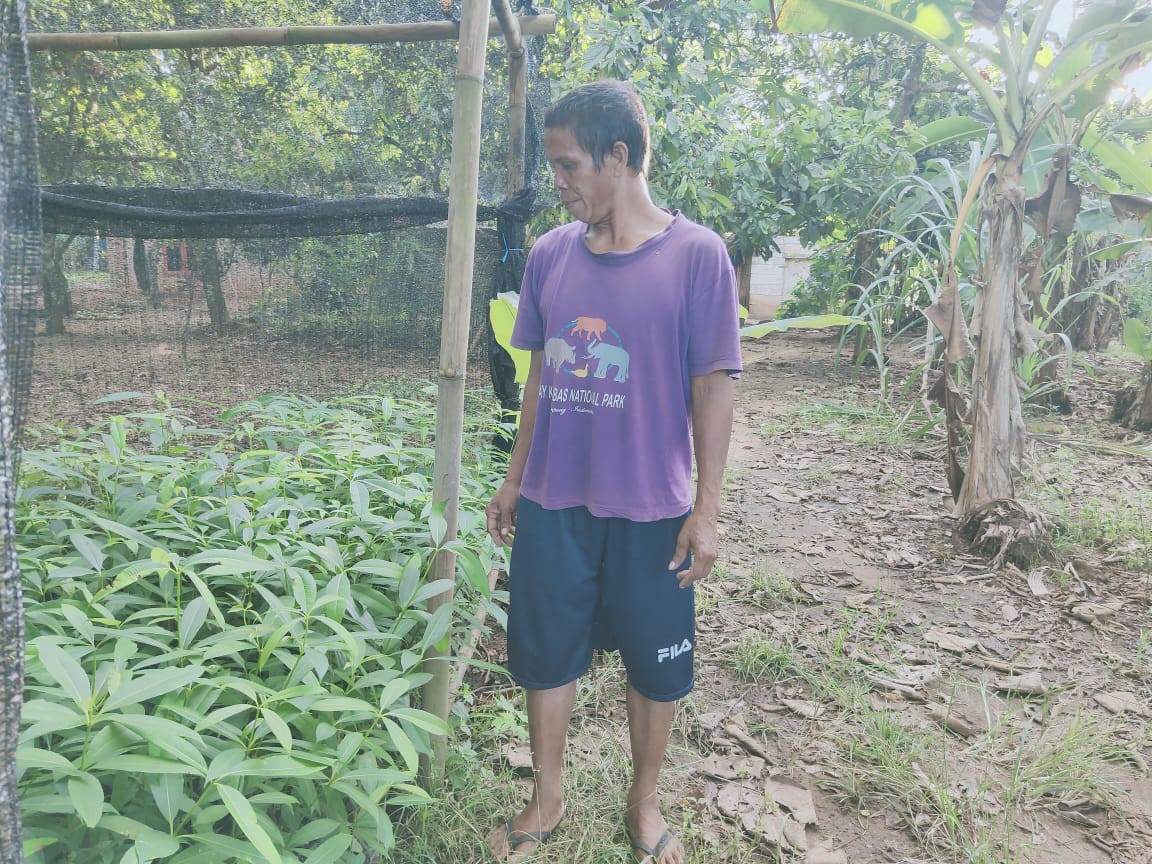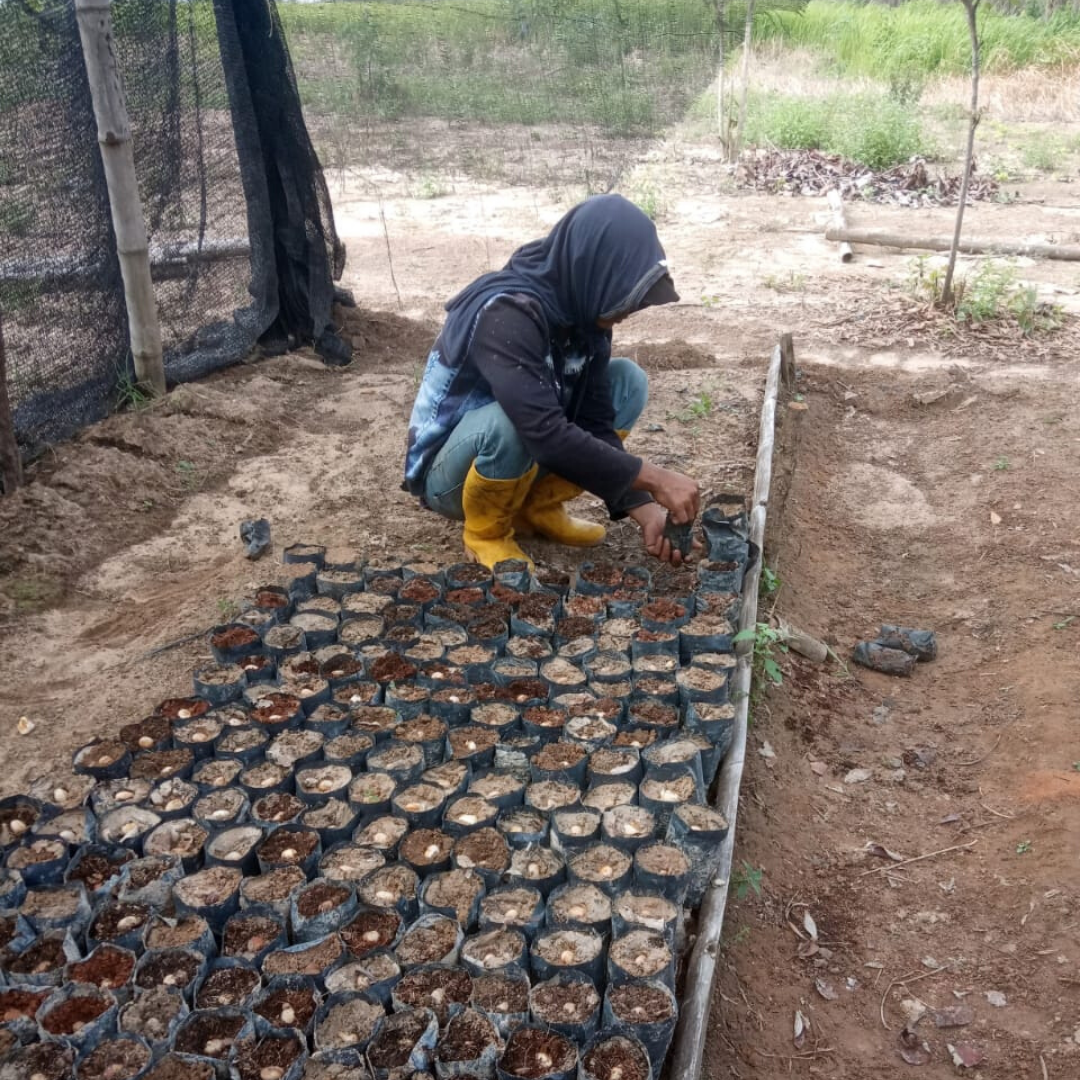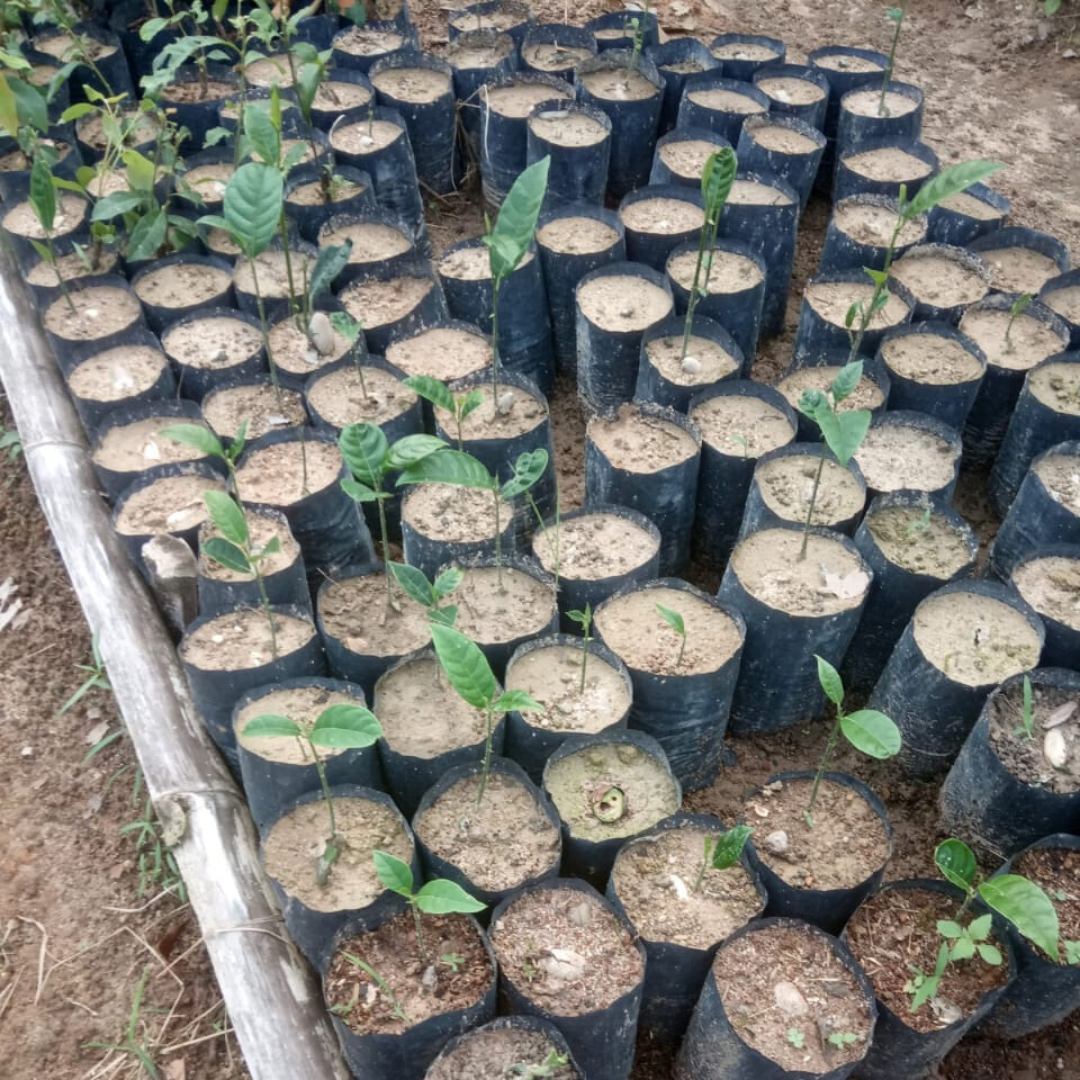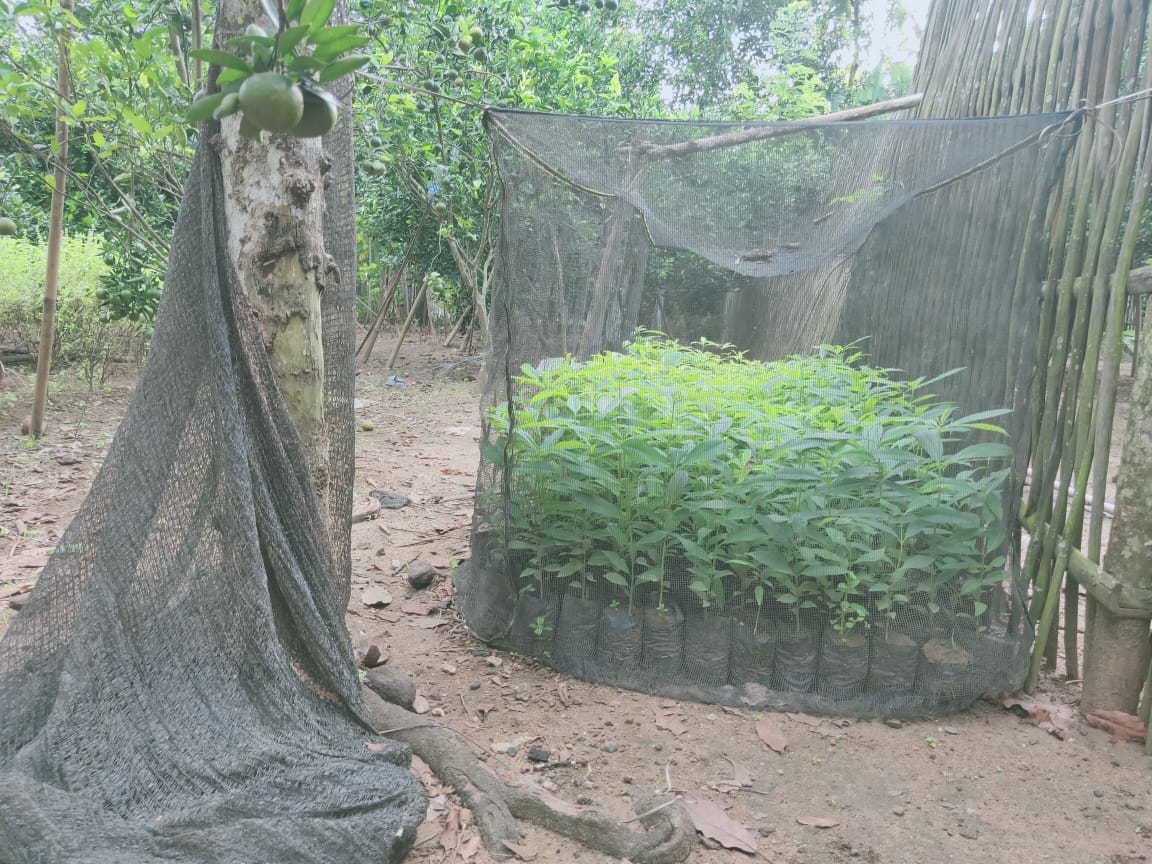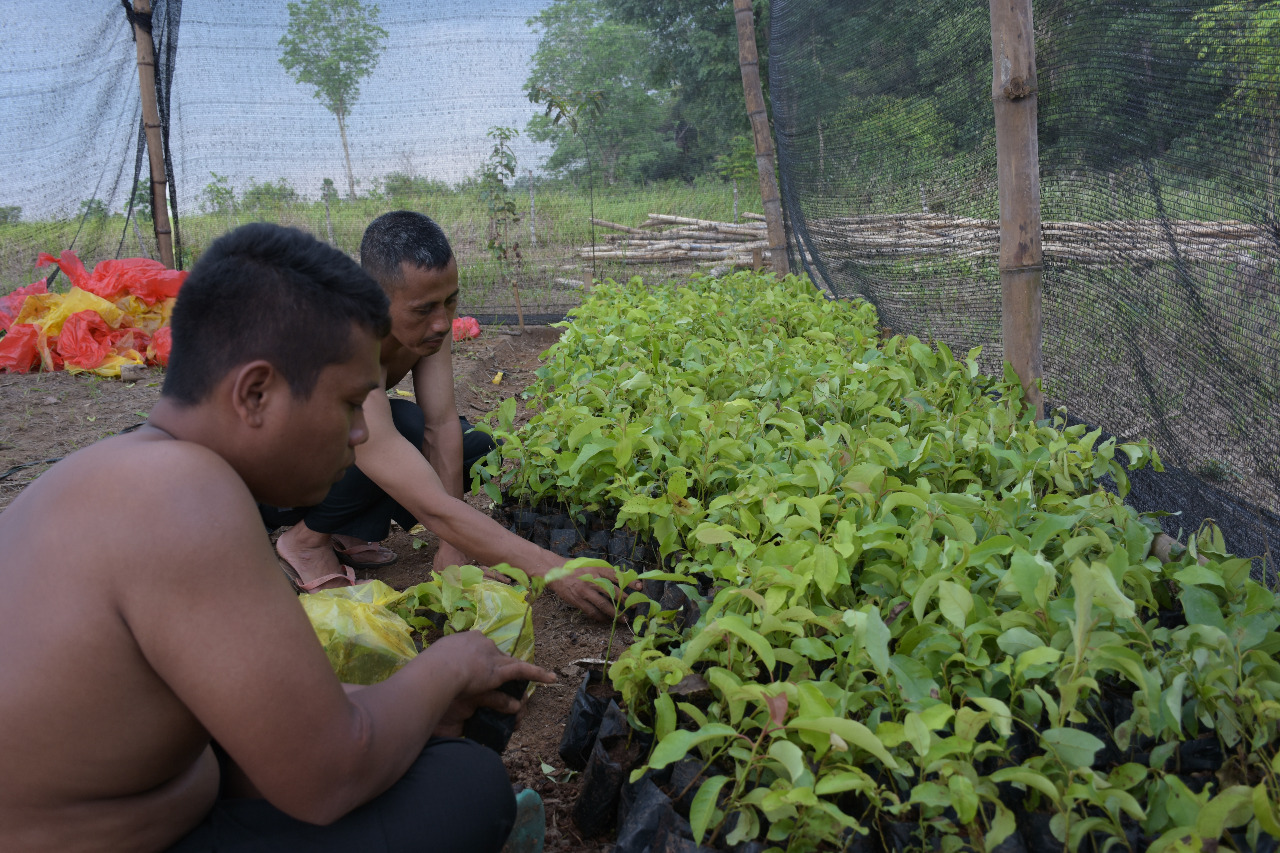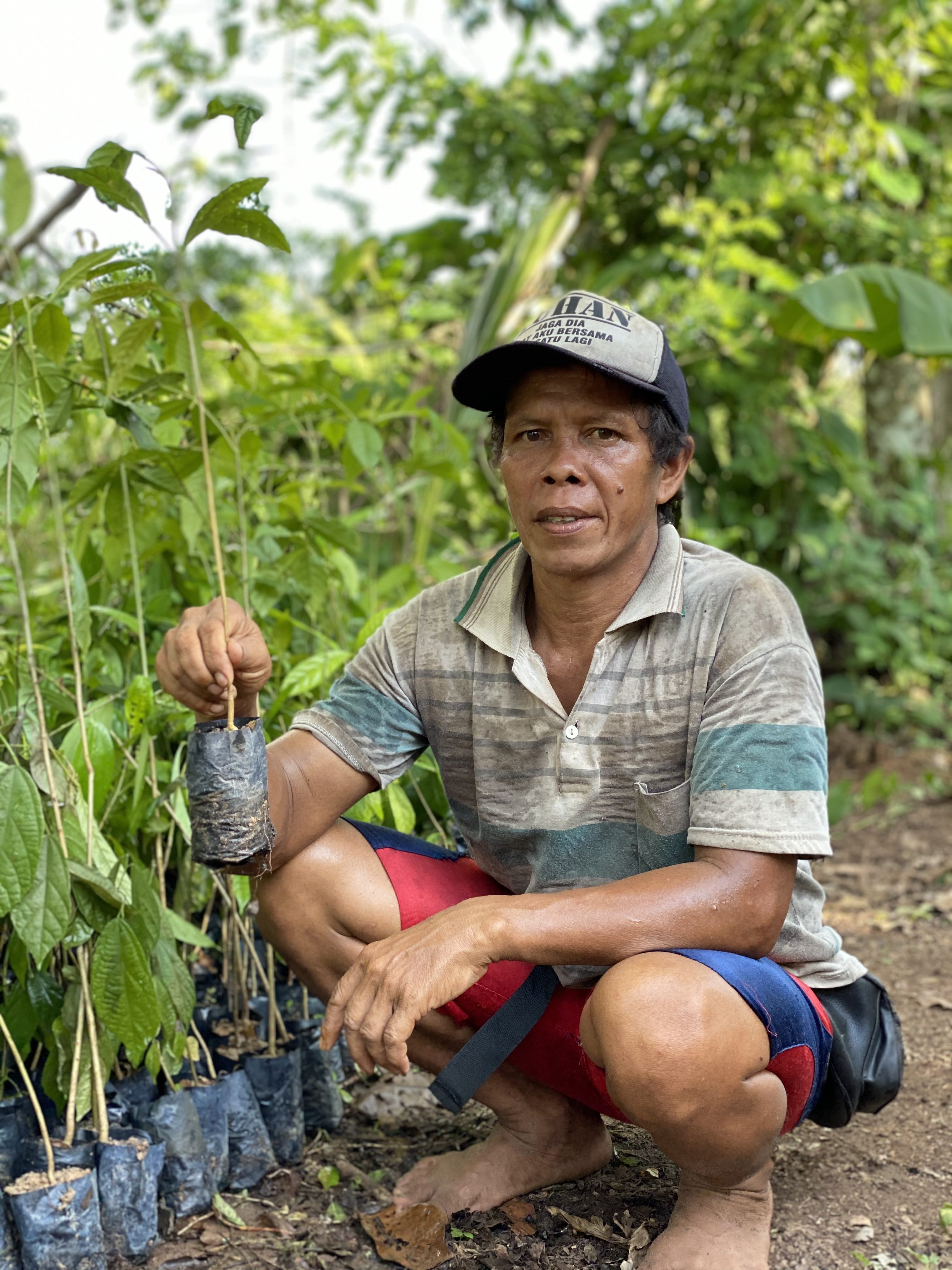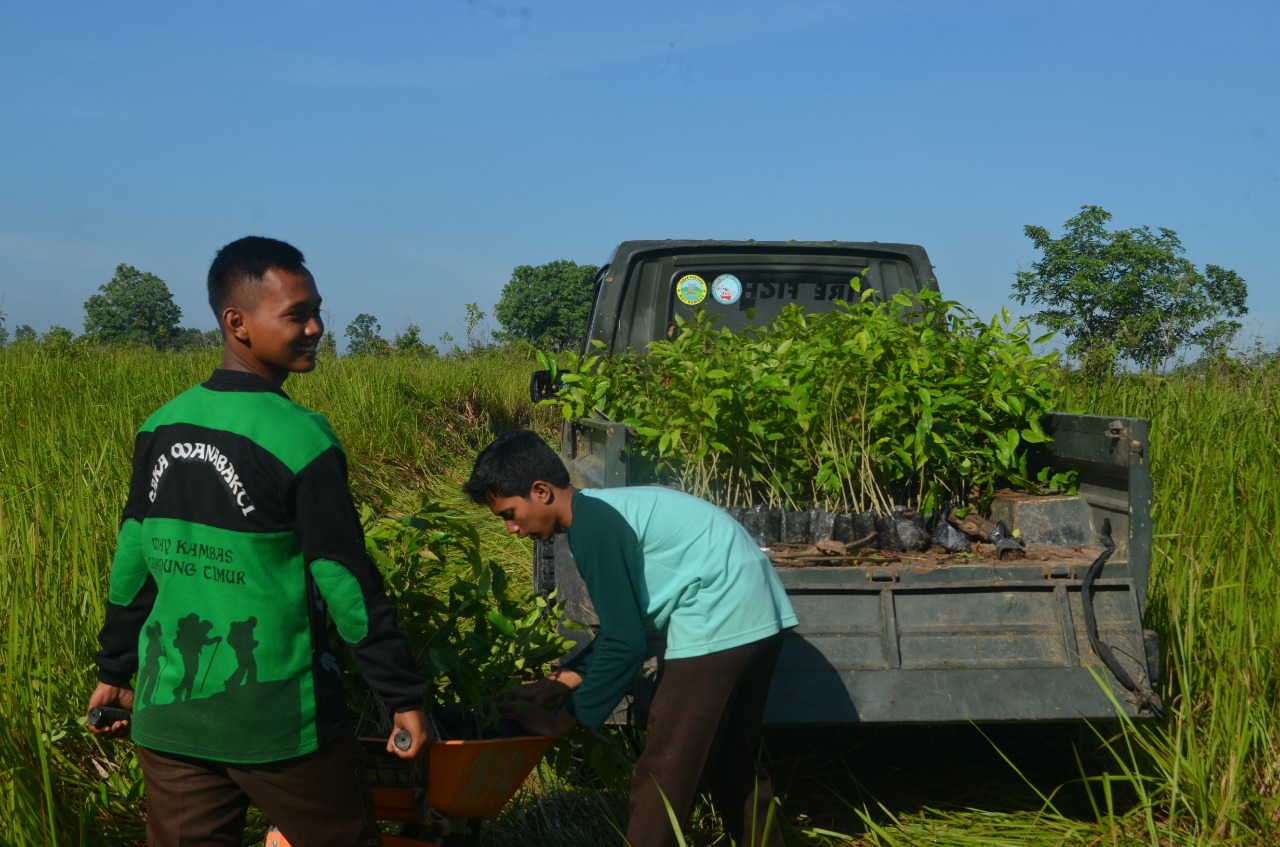Growing Harmony
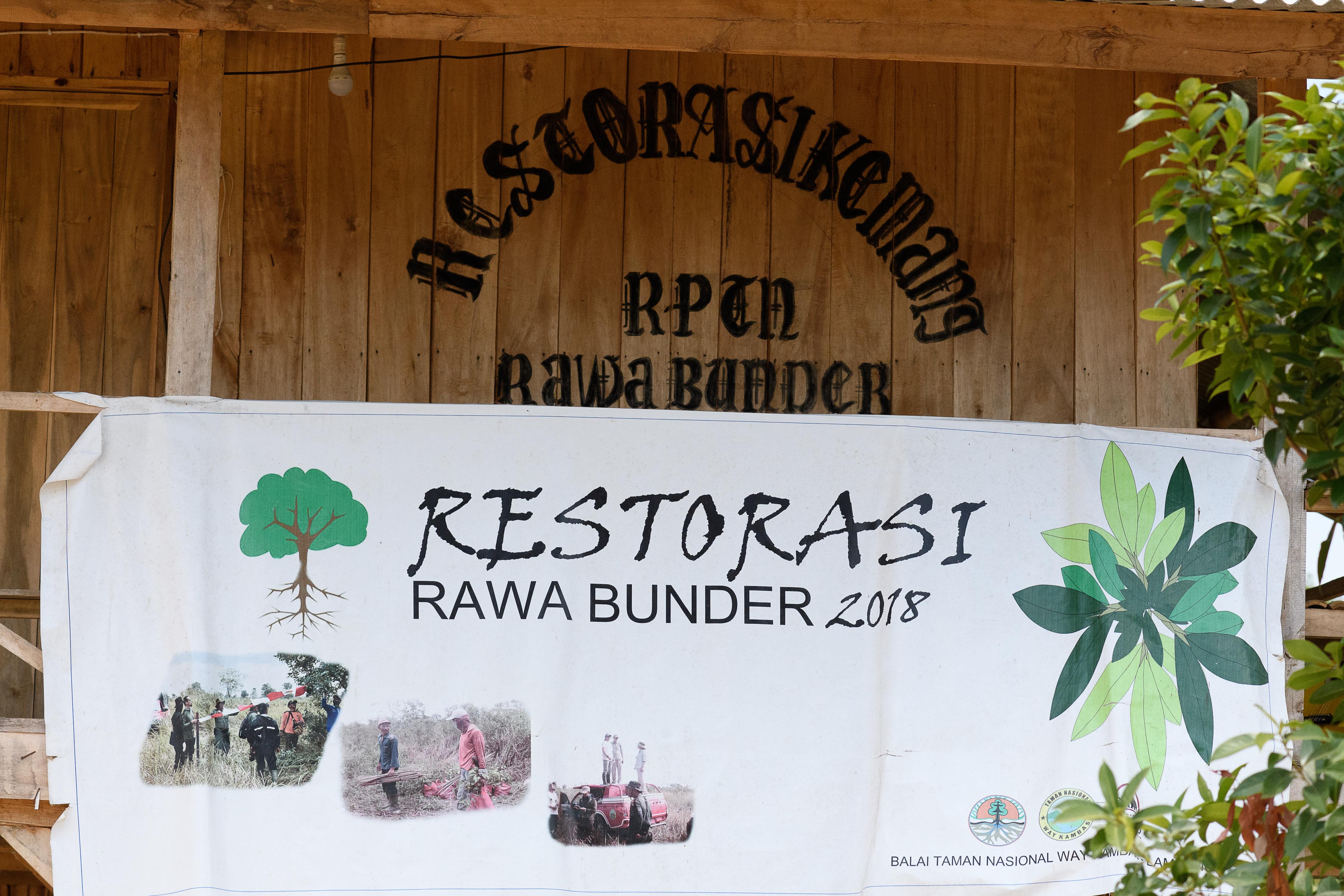
Reforestation can be difficult. Fires, tsunamis, and other natural disasters can be a setback. Without the commitment of the local community, the project will struggle to be sustainable. It’s a delicate harmony.
Way Kambas National Park in Sumatra is the only protected area in Indonesia with no buffer zone – villages surround the park on all sides. Human settlements have frequently encroached into the park, destroying the habitat that rhinos and other wildlife need to survive. Sadly, around one-third of the rhinos’ rainforest habitat has already been lost to human encroachment.
Park management successfully and peacefully moved around 5,000 families from within the park boundaries to nearby villages nearly ten years ago, but the land they cleared for illegal farming remains degraded and unsuitable for rhinos and other species.
IRF and park officials were already working together to replant a 25 hectare site. Building on the success of the program officials identified a second site to become a part of the reforestation program.
The new area is next to prime habitat for rhinos, elephants, tigers, and other wildlife and would need to be cleared and replanted. It was also located in close proximity to a local village which was an additional challenge. Villagers often collected fruits and other resources from the forest. A mutually beneficial solution would need to be found for both human and animal.
Mr. Rusdianto, coordinator and supervisor for the forest farmer group in Way Kambas National Park, recommended involving the local community in the reforestation effort. Local farmers will grow the new seedlings to replant the site; seedlings will be purchased back from the group. IRF will also work with park officials to hire local workers, including individuals with disabilities that often have difficulty finding work, to plant seedlings, maintain the area, and later harvest browse from mature trees to feed the rhinos at the nearby Sumatran Rhino Sanctuary. Trees should grow to maturity in just four or five years.
Rhinos’ preferred foods will be planted in the core of the restoration area. On the outside, bordering the village, locals will plant fruit trees that they can later harvest for use or to sell as an economic benefit. The jackfruit tree, liked by both humans and rhinos, will also be grown for true shared resources.
The restoration program is a model of collaboration and inclusion that has the potential to benefit all for many years to come.
Mr. Rusdianto
Turns out with strong local partners and a well considered solution, reforestation is not that difficult to envision. For just $1, you can plant a tree, support the local community, and feed rhinos.
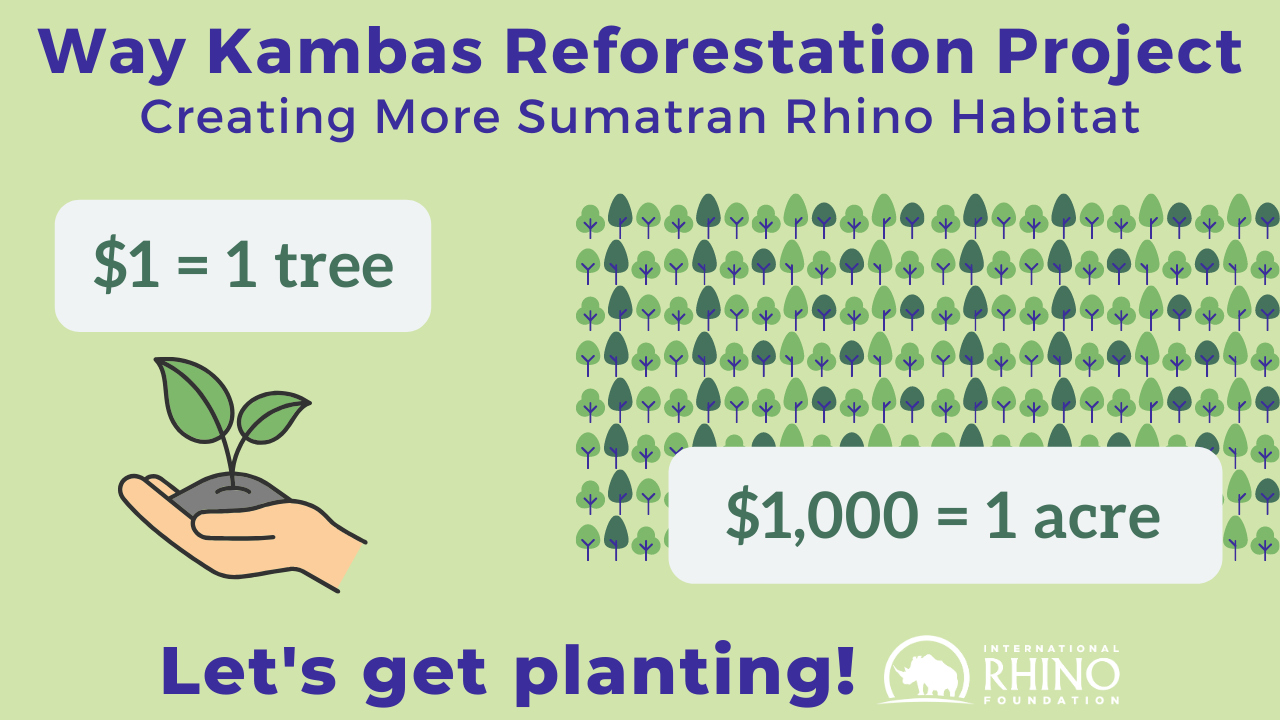
With every $1,000 donated, IRF and its partners will replant an entire acre and recognize you with your name on a sign on location. Leave a legacy for years to come.
Your support will bring Sumatran rhinos and other wildlife back to this area and help sustain the surrounding communities.

